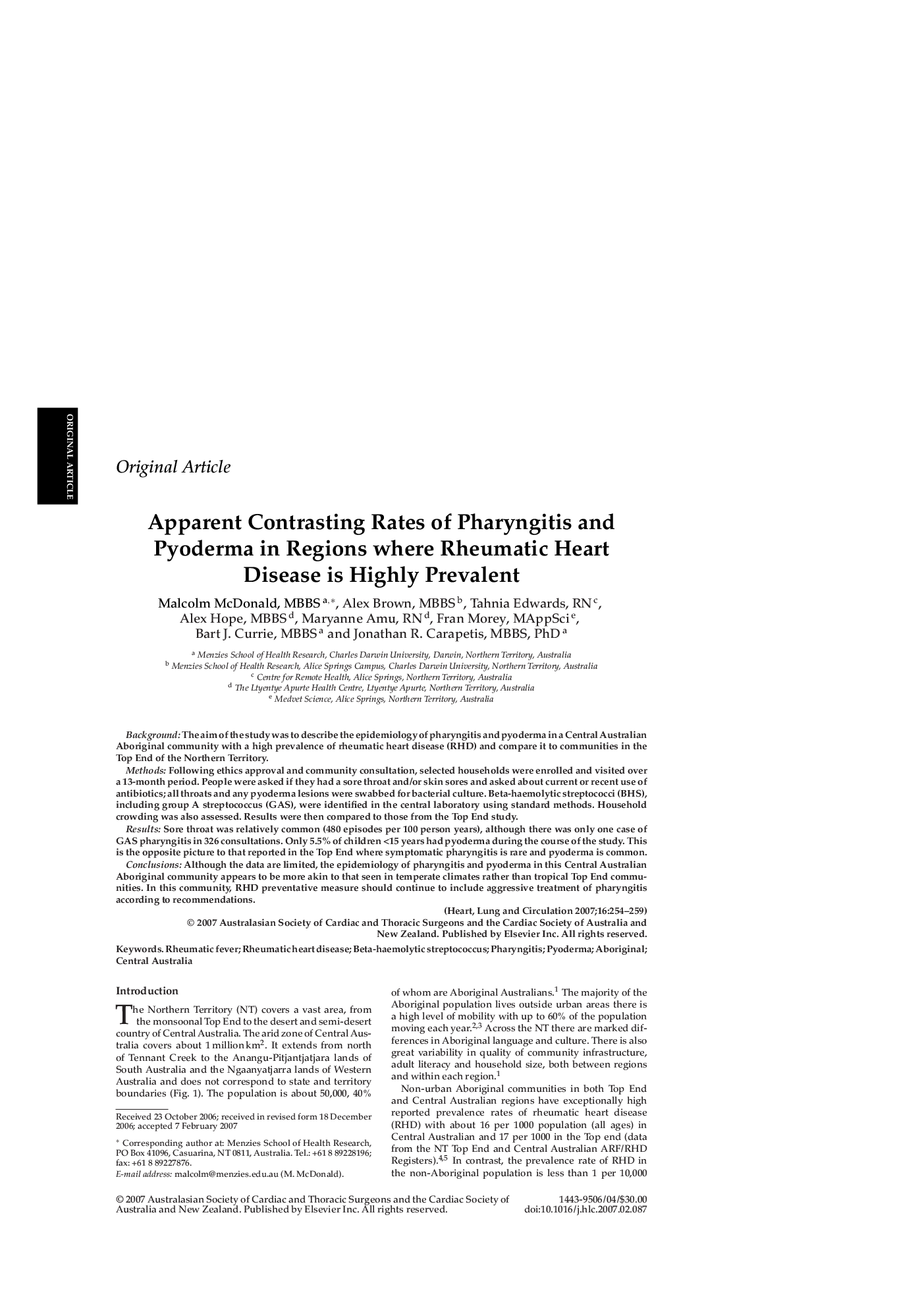| Article ID | Journal | Published Year | Pages | File Type |
|---|---|---|---|---|
| 2921345 | Heart, Lung and Circulation | 2007 | 6 Pages |
BackgroundThe aim of the study was to describe the epidemiology of pharyngitis and pyoderma in a Central Australian Aboriginal community with a high prevalence of rheumatic heart disease (RHD) and compare it to communities in the Top End of the Northern Territory.MethodsFollowing ethics approval and community consultation, selected households were enrolled and visited over a 13-month period. People were asked if they had a sore throat and/or skin sores and asked about current or recent use of antibiotics; all throats and any pyoderma lesions were swabbed for bacterial culture. Beta-haemolytic streptococci (BHS), including group A streptococcus (GAS), were identified in the central laboratory using standard methods. Household crowding was also assessed. Results were then compared to those from the Top End study.ResultsSore throat was relatively common (480 episodes per 100 person years), although there was only one case of GAS pharyngitis in 326 consultations. Only 5.5% of children <15 years had pyoderma during the course of the study. This is the opposite picture to that reported in the Top End where symptomatic pharyngitis is rare and pyoderma is common.ConclusionsAlthough the data are limited, the epidemiology of pharyngitis and pyoderma in this Central Australian Aboriginal community appears to be more akin to that seen in temperate climates rather than tropical Top End communities. In this community, RHD preventative measure should continue to include aggressive treatment of pharyngitis according to recommendations.
